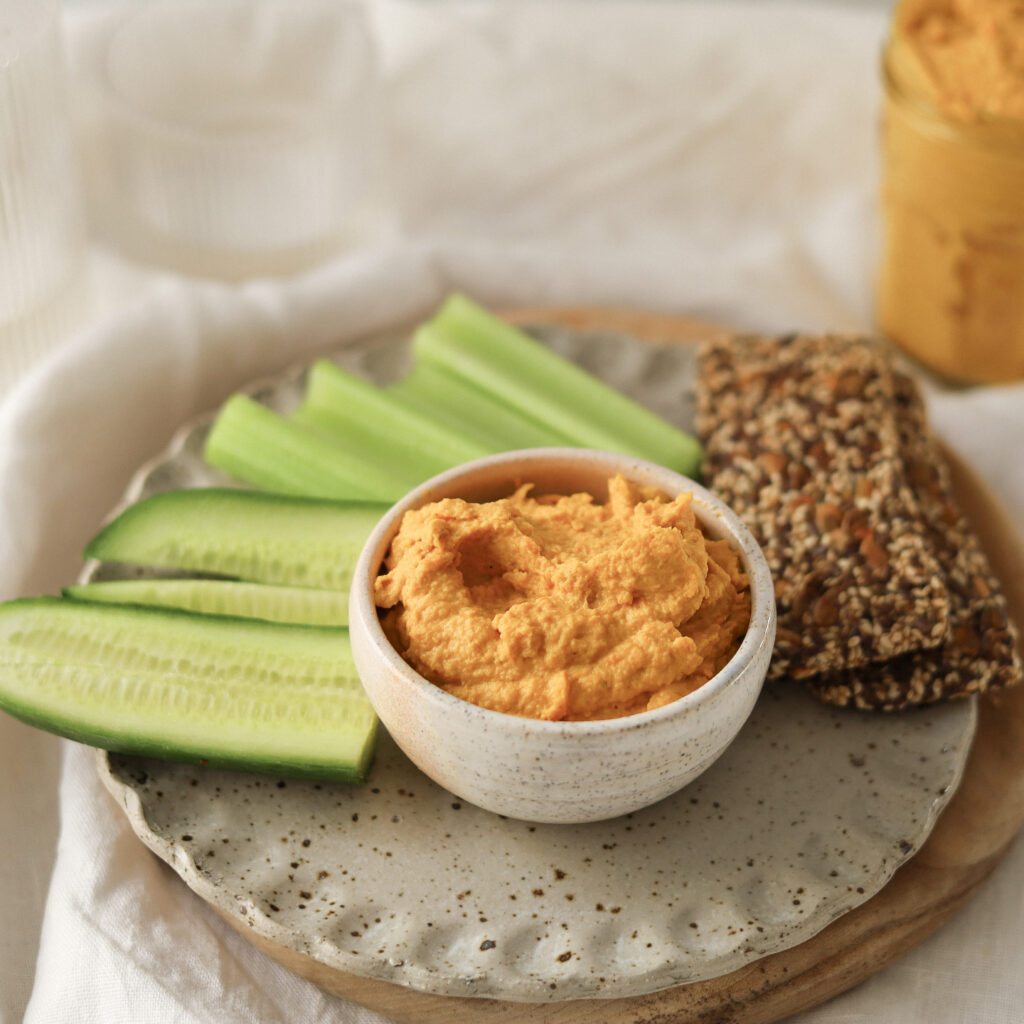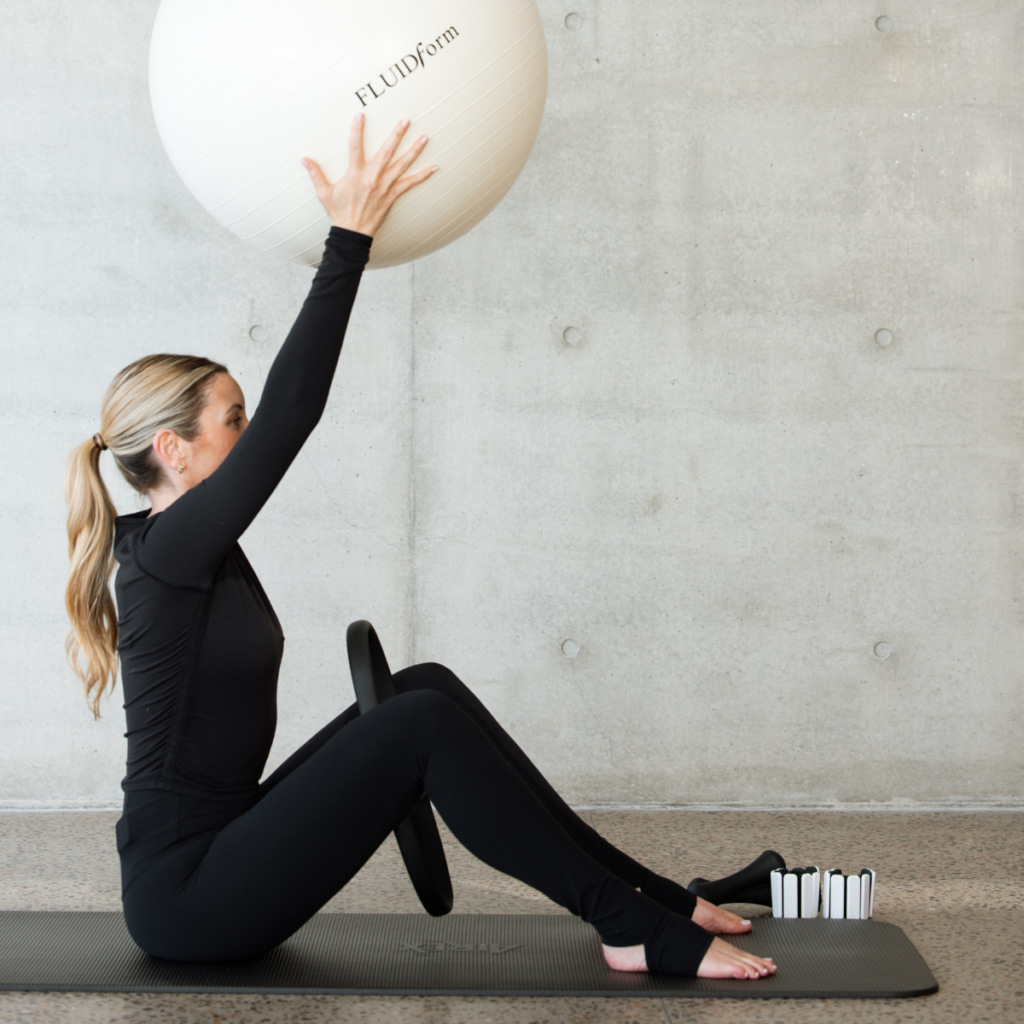How does Pilates specifically impact the body’s metabolism?
Our metabolism is the process in which our bodies break down and convert food into energy, and harness that energy to power our bodies. Our base metabolic rate is the speed at which our body burns calories during a rest state. It is a combination of what, when and how we eat, move and sleep that impacts our metabolic rate ability to convert food into energy.
Exercise is essential to a healthy body and mind and plays an important role in supporting a healthy metabolism. While you might associate metabolic-boosting exercise with HIIT and cardio, a balance of cardio, functional movement and strength training is essential to increase muscle mass which increases the rate at which our body burns energy between workouts. Bursts of cardio will burn energy quickly, whereas strength training ensures we are burning energy over a prolonged period.
Enter Pilates! In Pilates and specifically Fluidform, we integrate high intensity, low impact movements to build strength and increase your heart rate, without impacting your joints. Practising just 20 minutes of Fluidform a day will help you achieve the benefits of both cardio and strength training on your cardiovascular health, muscle development and energy – all of which fuel a healthy metabolism.
Are there any specific Pilates exercises or routines that are particularly effective in enhancing metabolic function and increasing calorie burn?
Any exercises which elevate our heart rate will effectively burn energy and calories. These exercises combined with strength training will increase our muscle mass, and enhance metabolic function. With this goal in mind, we focus on high repetition, dynamic movements such as a plank series with mountain climbers, layered lunge sequences, high repetition pulses at the barre or a deconstructed burpee (kinder on your joints)! All of which work to spike our heart rate, while simultaneously building strength.
Can Pilates help individuals with a slower metabolism achieve a more efficient calorie burn, and if so, what strategies or techniques are recommended?
Definitely! No matter your metabolic rate, fitness level or health, Pilates has the ability to challenge all bodies by activating and fatiguing our muscles to build strength and tone. Any exercise which incorporates short bursts of cardio will cause your heart rate to spike, an effective way to burn energy and calories. In saying this, for someone with a slower metabolism, I would recommend incorporating Pilates with a varied mix of cardio-based workouts including skipping, boxing, fast walking, sprints or swimming. Other lifestyle factors including your cleaning up your diet and prioritising your sleep will impact your metabolism. Improving and managing your metabolism requires a holistic approach across all aspects of your health.
How does the incorporation of Pilates into a regular exercise routine contribute to a sustained increase in metabolic rate even outside of workout sessions?
This is where the strength element comes into play. At Fluidform, we teach slow and controlled movements which target our slow twitch, stabilising muscles. Strengthening these muscles helps to support our balance, posture and joints to move efficiently and minimise our risk of injuries and imbalances. Strengthening and conditioning our muscles increases our muscle mass, which increases the rate in which our bodies convert food into energy between your workouts. A low muscle mass slows this process, which may result in weight gain. Put simply, a calorie-burning workout helps to burn energy on the mat, but a strength-focused workout affects our ability to convert food into energy during our rest and recovery time. Bottom line – both are equally important to support our metabolism and sustain a high metabolic rate.
Are there any lifestyle factors or habits that can be combined with Pilates to maximise its benefits on metabolism?
When it comes to your metabolism, like most functions of the body, it requires a holistic approach across all aspects of our lifestyle to support and sustain. In conjunction with a dynamic workout routine, a balanced diet and quality sleep is essential to improve our metabolic rate between workouts. Here are some simple and effective ways in which we can support our bodies ability to convert foods into energy.
- Increase your protein intake.
- Nourish your gut microbiome – eat a variety of fruits, vegetables and probiotics, limit processed foods, allow your digestive system to rest between meals.
- Prioritise a restful night’s sleep.
- Eat regularly and mindfully to kickstart your digestive system and stabilise your hormones (don’t skip meals).
- Move your body! As well as what I have mentioned, try working out in the cold! Your body will burn energy faster in order to keep warm.


Follow us on Instagram for more!





